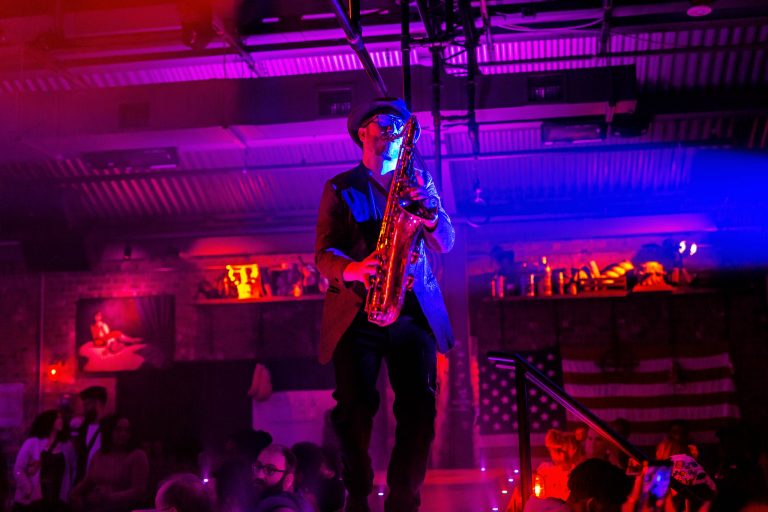By Spencer Jordan, Senior Vice President of Leasing for Columbus-based Steiner + Associates
As the retail sector continues to evolve, so does the way guests experience shopping. It’s no longer about the transaction or the purchase itself. Today’s consumers, especially younger millennials and Gen Z, are more focused on how shopping makes them feel. The emotional connection and overall experience to a retail destination now play a bigger role than ever in shaping the consumer’s interaction with a property.
In December, a study by EY found that 63% of Gen Z respondents planned to make purchases at brick-and-mortar retailers, compared to 50% who expected to shop online. Once considered an add-on to the shopping experience, entertainment and experiential offerings are now central to driving foot traffic and transforming retail centers into social community destinations.
Entertainment-driven leasing strategies and thoughtful curation are reshaping the retail experience, turning properties into places where people gather, find inspiration and create memories.
New Anchors and Curating the Right Tenant Mix
The traditional retail anchor is being redefined. Large department stores once dominated most shopping centers. Now, concepts like food halls, upscale restaurants, immersive cinema experiences and gaming venues are taking center stage. These tenants have become the primary trip generators, playing a critical role in driving consistent foot traffic, lengthening dwell time and creating more organic opportunities for engagement that people are seeking.
At Easton Town Center in Columbus, OH, Ivan Kane’s Forty Deuce’s brings a theatrical nightlife experience with its speakeasy-burlesque concept. PBR Cowboy Bar combines a modern country bar with mechanical bull-riding, while Pins Mechanical Co. offers bowling, arcade games and cocktails. Retail destinations that create synergy between their retailers and customers provide a well-rounded shopping experience. These centers evolve into ecosystems where guests can work out, restock on wellness essentials, enjoy a meal, engage in unique experiences and even unwind with a cocktail — all without ever needing to leave the property.
Thoughtful tenant curation turns a shopping trip into an experience. For example, a health-conscious guest might visit Alo Yoga, Whole Foods and Boss Gal Beauty Bar in a single visit. Accomplishing all that you want to in a day is what makes a center turn into an immersive environment that people want to return to and share their experience on social media. People are also willing to travel further and stay longer when there is a compelling mix of offerings. A solid mix of tenants is what turns a good center into a great one.
Centers that evolve into ecosystems where visitors can work out, restock wellness products, dine and socialize become destinations in themselves. Building an ecosystem that encourages longer stays is more than just a feel-good metric because it is quantifiable. The average dwell time for a mall in the US is around one hour. At Easton, the average dwell time is around two hours, and the longer a guest stays, the more they spend. Every additional minute on-site benefits both the individual tenants and the entire property.
The Developer’s New Role
Today’s developers must be more than landlords offering a space to lease. They curate experiences, foster tenant success and actively market the property. Co-marketing partnerships, seasonal activations and data-sharing programs are vital for supporting tenant performance and property success.
Exclusivity also drives foot traffic. Offering the only location of a sought-after concept within a market strengthens regional appeal. Strategic partnerships across lifestyle, dining, wellness and nightlife amplify the overall experience.
Flexibility, Authenticity and Tech
Flexible formats will be key when looking ahead at the successful retail spaces of tomorrow. Tenants are blending revenue models such as food plus fitness, or coworking plus cafés, while shorter lease terms and adaptive space planning are becoming standard.
Authenticity remains critical. Guests want to feel like they are somewhere special and not in just another cookie-cutter location. Even national concepts are localizing their presence, and brands with regional roots, who might have a loyal following, are strongly resonating with guests.
Retail environments that integrate technology, whether through personalization, advanced data analysis or AI-driven insights, will be best positioned to thrive in the years ahead. These forward-thinking centers are not only creating smarter spaces, but also delivering superior connectivity and enabling retailers to gain deeper insights into their customer base. The ability to gather and leverage data will allow both landlords and brands to refine the shopping experience, tailor offerings and respond quickly to shifting consumer preferences.
The most successful centers will be those that embrace these technological advancements while also reimagining their core purpose. Rather than relying solely on traditional formats, forward-looking retail destinations are being built around bold ideas and immersive concepts that foster emotional connections.
This evolution means moving beyond the idea of shopping centers as passive spaces where transactions occur. Instead, the next generation of retail developments will become intentional, multifunctional environments where people come not just to shop, but to gather, experience and live. They will serve as cultural and social hubs, offering opportunities for discovery, engagement, and community-building that extend far beyond the act of making a purchase.
 Spencer Jordan is the Senior Vice President of Leasing for Columbus-based Steiner + Associates, the co-owner, developer and manager of the award-winning Easton Town Center and corresponding Easton Gateway. To reach Spencer directly, email sjordan@steiner.com.
Spencer Jordan is the Senior Vice President of Leasing for Columbus-based Steiner + Associates, the co-owner, developer and manager of the award-winning Easton Town Center and corresponding Easton Gateway. To reach Spencer directly, email sjordan@steiner.com.
Related Articles

Hexnode CEO on how the “Holiday Illusion” is Masking the Risks of Retail’s Seasonal Workforce
The danger of seasonal hires is magnified not just by who is accessing the network, but when they are doing it. Sophisticated threat actors possess a deep understanding of the retail operational calendar.

The New Frugality: How Inflation and Tariffs Are Reshaping Consumer Spending
One of the most telling shifts is how shoppers approach decision-making. Where convenience once dominated, consciousness now plays a larger role. People are researching more before making a purchase, comparing prices across multiple platforms, and questioning whether they really need the product in the first place.

Embracing new concepts vs the return to brick-and-mortar
Balancing the return to physical retail and the development of new technologies to enhance customer experience and drive operational efficiency for long-term success.
Enartis to Acquire Parsec in Winemaking and Retail Deal
The deal will bring Enartis and Parsec together to help wineries manage every part of production more easily and efficiently, from grape to bottle.


 for the latest news and job opportunities in retail tech
for the latest news and job opportunities in retail tech 